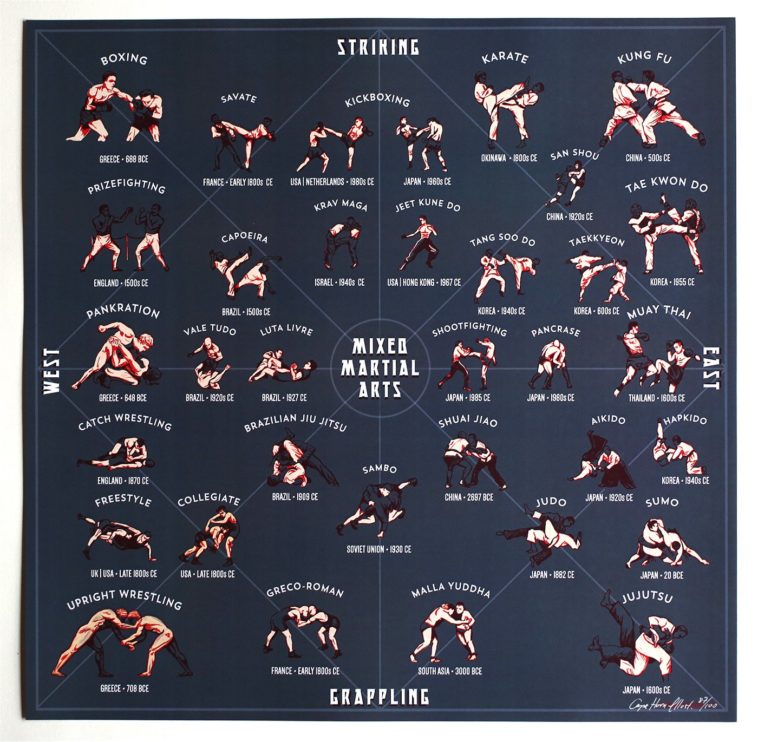Step Into The Fascinating Trip Of Martial Arts, Where Ancient Customs Hit Modern Techniques, Revealing Tricks That Continue To Form Today's Battle Society
Step Into The Fascinating Trip Of Martial Arts, Where Ancient Customs Hit Modern Techniques, Revealing Tricks That Continue To Form Today's Battle Society
Blog Article
Content Create By-Padilla Odonnell
Martial arts have an interesting history that spans centuries and continents. You might locate it intriguing just how ancient techniques like Shuai Jiao and Kalaripayattu prepared for modern-day fight techniques. These disciplines not only highlight physical skills but additionally reflect the cultures that birthed them. As you discover their advancement, think about how globalization has actually transformed these traditional forms right into crossbreed styles. What impacts do you believe have formed today's martial arts landscape?
Ancient Martial arts: The Structures of Fight
As you explore the world of old martial arts, you'll uncover the rich structures that formed combat methods across cultures. Very early practices focused on Self-Defense and survival, often incorporating strikes, hurting, and weapons.
In ancient China, for example, techniques like Shuai Jiao emphasized throws and joint locks, while India's Kalaripayattu showcased agility and liquid activity. check here established Kenjutsu, a refined swordsmanship that highlighted self-control and method.
These martial arts offered not just for fight yet additionally as a way of personal growth, instilling values like regard and determination. Learn Additional blending of these strategies gradually laid the groundwork for the varied martial arts you see today, each mirroring the unique viewpoints and requirements of its culture.
The Cultural Influence on Martial Arts Development
While martial arts commonly reflect the functional demands of a society, they likewise embody the social worths and ideas of their beginnings. When you explore various martial arts, you'll notice exactly how they're influenced by faith, viewpoint, and social standards.
As an example, the focus on regard and technique in Japanese martial arts stems from Zen Buddhism and samurai society. In contrast, Brazilian Jiu-Jitsu promotes versatility and strategy, shaped by the need for performance in a varied, multicultural atmosphere.
You might discover that the rituals, uniforms, and training methods mirror a neighborhood's background and identity. By comprehending these social influences, you grow your recognition of martial arts and their role in shaping human experiences around the world.
Modern Adaptations and the Globalization of Martial arts
Martial arts have transformed dramatically in recent decades, adjusting to contemporary culture and global impacts. You'll observe that typical kinds have blended with modern strategies, creating hybrid styles like MMA. These adjustments satisfy varied target markets, making martial arts accessible and enticing globally.
With the increase of social networks and electronic platforms, you can find tutorials and competitions from all corners of the world, breaking geographical obstacles. This globalization has actually led to a shared gratitude for various self-controls, from Brazilian Jiu-Jitsu to Taekwondo.
As you engage with these arts, you'll realize they're not nearly combat; they advertise health and fitness, self-control, and mental health.
Inevitably, modern adaptations have enhanced the martial arts landscape, making it a vibrant and developing practice.
Conclusion
In exploring the history and evolution of martial arts, you uncover a fascinating mix of techniques, cultures, and ideologies. From old techniques like Shuai Jiao and Kalaripayattu to the modern adaptability seen in MMA, martial arts mirror mankind's mission for Self-Defense and personal development. As you involve with these practices, you not just gain skills but also a much deeper admiration for the diverse customs that shape our globe today. So, continue your journey and embrace the art of fight!
